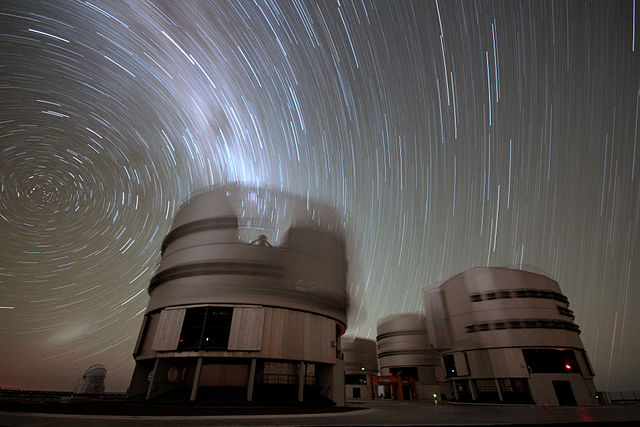Motion blur is the apparent streaking of moving objects in a photograph or a sequence of frames, such as a film or animation. It results when the image being recorded changes during the recording of a single exposure, due to rapid movement or long exposure.
Earth's rotation causes motion blur in long-exposure photos of the night sky. This diurnal motion leaves star trails in exposures like this one taken at La Silla Observatory.
An example of motion blur showing a London bus passing a telephone box in London
1920s example of motion blur
A taxicab starting to drive off blurred the girls' faces in the image.
Long-exposure photography
Long-exposure, time-exposure, or slow-shutter photography involves using a long-duration shutter speed to sharply capture the stationary elements of images while blurring, smearing, or obscuring the moving elements. Long-exposure photography captures one element that conventional photography does not: an extended period of time.
A long-exposure photograph of a street in Carson, California, 1986. The trails along the street are from headlights and taillights, while the circles in the sky are from a police helicopter.
The central square of Rothenburg ob der Tauber, Germany, during blue hour. Notice how a long exposure blurs moving vehicles and pedestrians while buildings retain sharp focus.
In this 45-minute exposure taken on a dark clear night at Paranal Observatory, the stars leave trails as they appear to revolve around the south celestial pole (left), due to Earth's rotation.
Long-exposure photograph of a break in pool.








